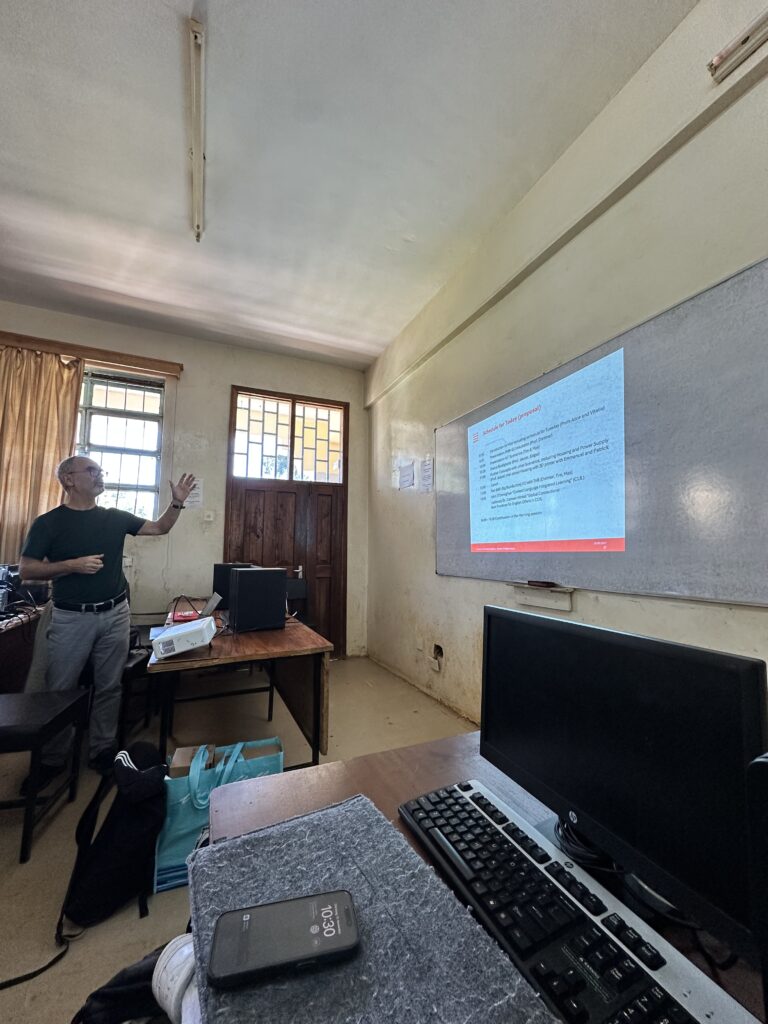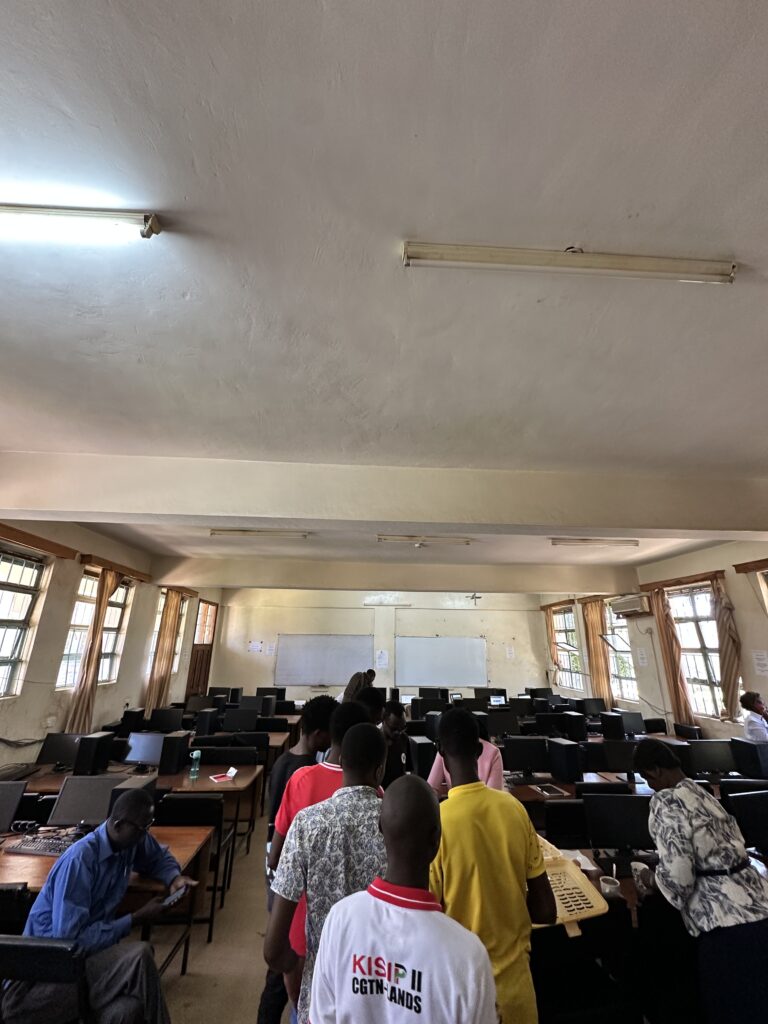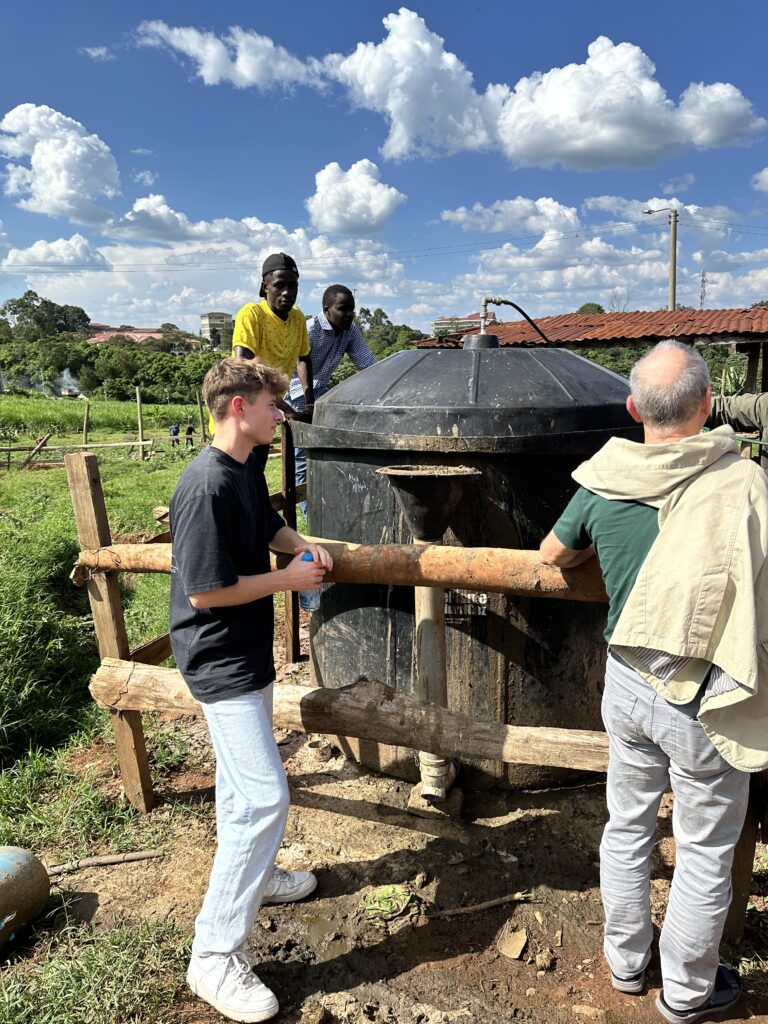Today was our first day at the partner university MMUST. The morning started with our presentations: Professor Wikarski – for us and in the following Dietmar 🙂 – introduced THB and the history of the DAAD-funded cooperation between THB and MMUST, which dates back to 2017. After explaining the objectives of THB’s ELI project, he explained the specific goals and the planned course of the sub-project “IoT for Smart Agriculture” with MMUST here in Kakamega. After that, Tim and I presented our ideas for LoRaWAN scenarios – an innovative approach to promote digitalization in the areas of biogas plants, greenhouse management and weather stations. For these projects, we had brought along some sensors and a gateway to demonstrate the potential directly onsite. This approach was met with great interest, and the questions from the Kenyan professors and students showed us that these ideas were well received.
After our presentation, our Kenyan partners took the floor and reported on their existing projects, especially the biogas plant on campus. It was particularly exciting to learn about the current state of the biogas plant and to get an insight into its existing operation. The plan is to further develop this facility with our ideas and sensor technology to increase its efficiency.
After a short traditional tea break together, we discussed possible adjustments and the integration of our LoRaWAN ideas. The discussions were open and constructive; we were able to work out some specific starting points for implementing the technology on-site.
Around noon, we had a small break and enjoyed a traditional meal on campus. The meal gave us a further insight into the culture here in Kakamega.
In the afternoon, we explored the large campus and visited the biogas plant on the small farm that belongs to the university. Here we gained practical insights and learned that while the plant is already in operation, there is still potential for increasing its efficiency. Together, we considered how sensors could be integrated to make the plant more efficient.
Back at the university, we continued our discussion and examined the equipment we had brought with us in more detail to evaluate its possible applications. Together, we also set the next steps, especially the installation of the gateway for the following day.
When our official part of the day’s program was over, we headed back to the hotel. Tim and Max decided to explore the surrounding area a bit more and visited a nearby shopping center.
In the evening, we gathered at the hotel for a shared dinner. We reflected on the day, reviewed our experiences, and made plans for tomorrow.



